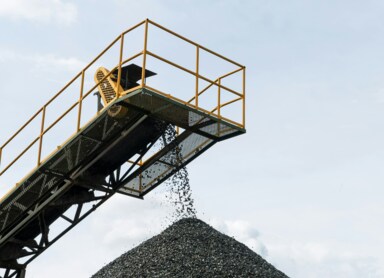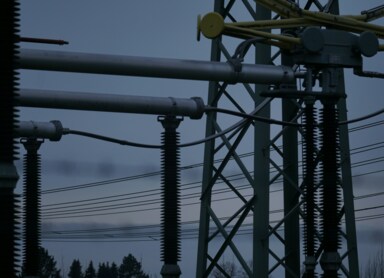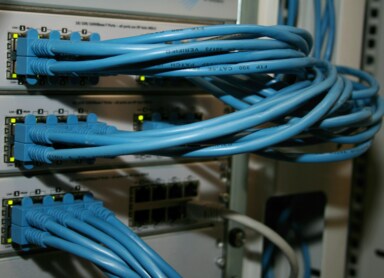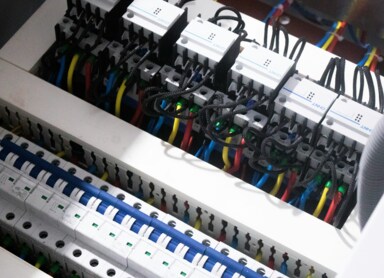Energy Intensity – What Is It and How Does It Affect Energy Consumption?
Using road, residential, or service infrastructure requires specific energy inputs. The less energy that needs to be consumed to use the infrastructure, the more energy-efficient the facility is. The concept opposite to efficiency is energy intensity. How should we understand it, and what can we do to reduce energy intensity in various industrial sectors?
What is Energy Intensity? Definition and Meaning
In the literature, energy intensity is defined as the amount of energy required per unit of production resulting from this consumption1. In other words, it is the amount of inputs needed to produce a given measure of output. Energy intensity is of great importance in the context of sustainable development, as the goal should not be to produce as many goods and services as possible at any cost, but to do so in a cost-effective and environmentally friendly way.
The lower the energy intensity of a given technological process, the more profitable it is—not only economically for the enterprise but also for the environment.
Energy intensity is closely related to energy efficiency. The more energy-efficient a process is, the lower its energy intensity. This relationship is not purely theoretical.
In many regulations, mainly in construction law, legislators set specific requirements for building components. A good example is the permissible primary energy demand index (EP). Currently, it is 70 kWh/(m2 x year), but a few years ago, it was 95 kWh/(m2 x year). This indicates a gradual reduction in energy intensity at the legislative level, with increasingly stringent requirements for building materials.
The Importance of Energy Intensity for the Environment
Although low energy intensity can be summed up as "more for less," it's worth considering this phenomenon in a broader context. Reducing energy intensity leads to a decrease in fossil fuel extraction and the associated environmental pollution. Undoubtedly, increasing energy efficiency (reducing energy intensity) would help solve many pressing societal issues, such as:
- global warming;
- exploitation of natural resource reserves;
- ongoing environmental pollution;
- the risk of energy security disruptions, i.e., ensuring the state's energy supply necessary for the functioning of economic infrastructure.
As one might guess, legislative actions in this area are progressing too slowly, so it is worth implementing energy-efficient solutions at the enterprise level. Such an investment in a company will pay off in the form of lower operating costs, higher revenues, and improved reputation, which—especially in the era of interest in ESG reporting—seems highly desirable.
Building Energy Intensity – How to Calculate It and Why It Matters
Building energy intensity indicates how much energy is needed to use the facility in comfortable thermal conditions. It is influenced by many factors, including:
- building architecture – orientation relative to the cardinal directions, room layout, and size;
- type of ventilation used – it can be natural, mechanical exhaust or supply, or hybrid;
- materials and technologies used for building enclosures;
- type and efficiency of the heating system;
- energy management system in the building (BEMS, Building Energy Management System software).
How can you check how much you'll pay to maintain company buildings? As of April 2024, energy certificates are mandatory, which, among other things, specify the energy intensity of a building. This document can only be prepared by a person with the necessary qualifications and credentials. For the entrepreneur, however, it is important that the audit aims not only to identify the state of the building infrastructure but also to provide recommendations for improving its energy performance.
The energy intensity parameter is particularly significant because heating costs are fixed. By reducing them, you gain real profits that can be invested in the business.
Energy Intensity of Road Transport – Impact on Energy Consumption
In addition to building infrastructure, energy intensity is also crucial for transportation. It defines how much energy (fuel or electricity) is needed to maintain the logistics chain. The energy intensity is primarily influenced by the size of the fleet and its technical specifications (type of propulsion unit, fuel consumption, or range in the case of electric vehicles).
To optimize energy efficiency in transport, renewable energy sources should be used as much as possible. This allows for the creation of a fleet that can perform its tasks properly without burdening the environment.
To achieve this, it is recommended to purchase electric vehicles and EV chargers. This not only reduces energy consumption but also increases self-consumption, thereby lowering electricity bills. By storing electricity in car batteries, the company prevents the surplus of produced or purchased electricity from being returned to the DSO operator, which—whether the entrepreneur uses a net-metering or net-billing system—results in losses.
Currently, the purchase of electric vehicles can be partially financed through the "My Electrician" program. Entrepreneurs can receive up to 70,000 PLN for the purchase of a zero-emission vehicle.
Methods to Reduce Energy Intensity in Various Sectors
Sustainable development in practical terms has been discussed relatively recently. Therefore, most companies still have significant room for maneuver when it comes to reducing energy intensity in their ongoing operations. Let's look at some examples of ways to reduce energy demand.
Installation of a Heat Pump
Heat pumps support the heating system and maintain optimal temperature conditions by utilizing the temperature difference between the upper and lower sources. It is estimated that ground-source heat pumps can be up to four times more efficient than traditional heating systems.
Powering Electrical Devices with Photovoltaics
You can—at least partially—power company devices using electricity from solar radiation. Photovoltaics combined with a heat pump creates a synergistic effect, as both systems complement each other. Photovoltaics can power lighting, production lines, measuring devices, and other infrastructure elements. To further increase the benefits of photovoltaics, combine it with an energy storage system.
Thermomodernization of Buildings
Insulating walls or replacing installations with more modern and better-insulated ones is also a way to reduce energy intensity, as well as an opportunity to obtain a white certificate from the Energy Regulatory Office. Energy efficiency certificates are property rights that are traded on the Power Exchange.
We invite all entrepreneurs who aim to reduce energy intensity in their company to collaborate with us. We will help develop a long-term action strategy and propose an energy transformation tailored to the company's financial capabilities and business objectives.
1. Plich M., Skrzypek J.; Trendy energochłonności polskiej gospodarki; Wiadomości statystyczne nr 7/2016






